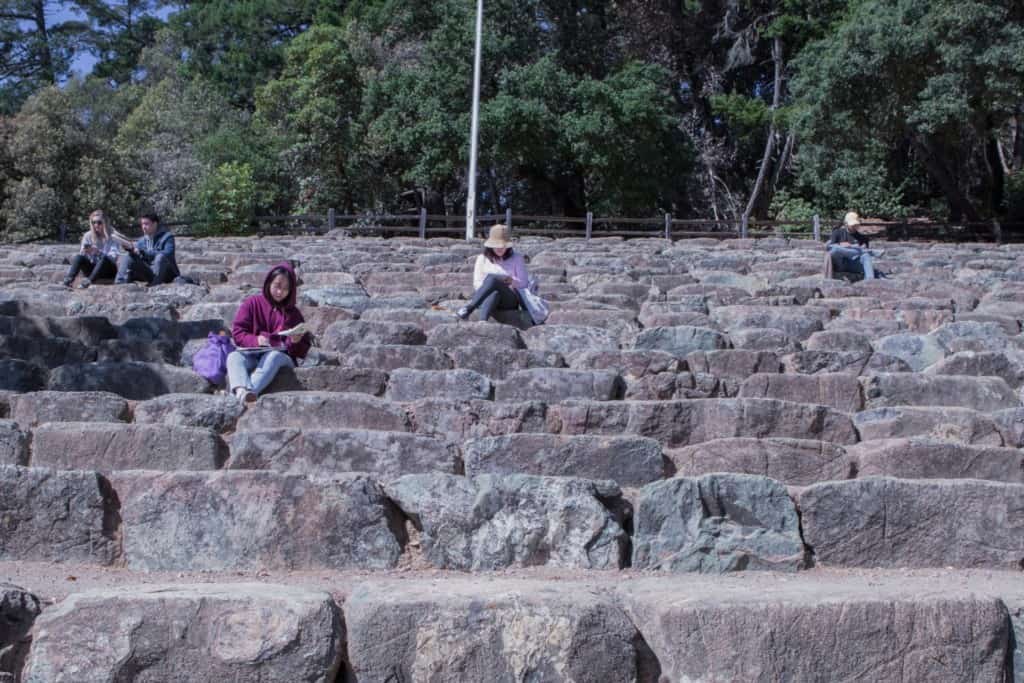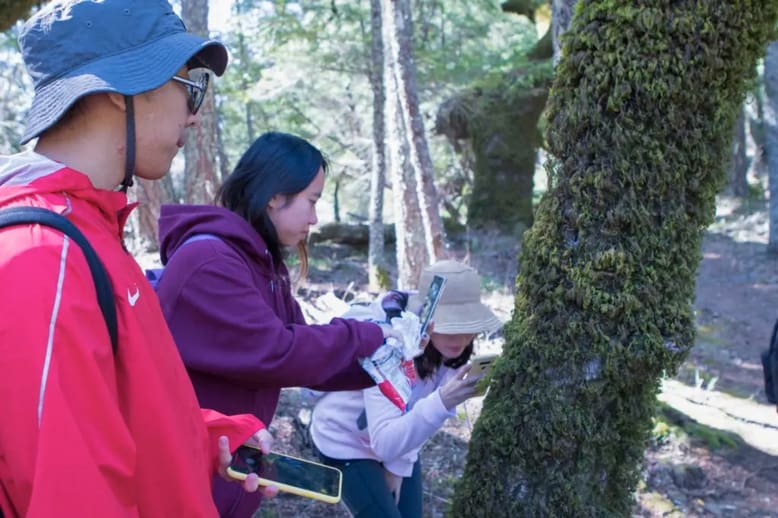At almost 3,000 feet above sea level, Mount Tamalpais is as close as many Northern Californians come to touching the sky. That is, if the wind doesn’t sweep them off first. School of Landscape Architecture Director Jeff McLane has to yell over the gusts to teach his students about the natural environment around them.

A Natural Legacy
“Sixty million years ago, this mountain was under the ocean,” McLane hollers, noting that the San Andreas Fault had ground out the very mountain beneath their feet. From their vantage point, McLane and his six students working to earn a landscape architecture degree see the city skyline surrounded by the bay. When they turn their heads to the right, they see Stinson Beach and the Bolinas Lagoon.
The morning of Sept. 28 is a chilly end to a warm week in the Bay Area. With sun in their eyes, the students squint as they paint in watercolors at the open-air stone venue, Sidney B. Cushing Memorial Amphitheatre. Next they trek into the woods to examine the mountain’s wet habitats.

Within the Landscape of the Landscape Architecture Curriculum
This group of emerging designers has been studying the Earth’s ecologies in McLane’s nature systems classes in both undergraduate and graduate Landscape Architecture programs. The students’ goal is to learn how these ecologies will influence their future design work.
“The reason we come here,” McLane says, “is because on Mt. Tam, we see and experience a lot of the systems we’ve been talking about—geologic, water, ocean, climate, wildlife.”
He asks students to observe with their senses. What do they see, hear and smell? How does the air feel different in exposed areas versus shaded ones? What are the colors, and what do they say about the ecosystem and its health?
Looking at a presentation in a classroom is different, McLane tells his students. “It’s not the same as ‘being in it,’ coming out and just feeling the wind, feeling the air.
“Does it feel humid, or does it feel dry? Is it something in between? Having an experience where you get to the natural systems around us is really a large part of what we’re doing.”

Art of Nature, Nature of Art
Anadelia Gonzalez, a Landscape Architecture undergrad, has been getting tips on watercolors from her brother, who does fine art. She puts her lessons to work, turning glimpses of nature into painted scenes in her field journal.
“I feel really connected up here, with the air, the wind,” she says. “Everything is interesting—getting to know the history behind this mountain, the environments, and how it all came together.”
It also happens to be her birthday. “The views are the best. I really love the way I started my birthday. It makes a big difference.”
Photos by Nina Tabios
Original article by Nina Tabios of AcademyArtUNews.com, https://artunews.com/